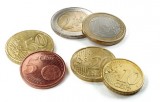Euro coin facts
In 1999, the founding states of the Eurozone changed their national currencies to the Euro, but actual Euro coins and banknotes did not start to enter circulation until 2002. For a period of time after the switchover — a process still going on in a few countries — citizens could exchange Euro coins for coins in the country’s previous currency.
Today, the Euro is used in 22 countries across Europe, from economic powerhouses like Germany, France and the Netherlands to tiny states like San Marino and Vatican City. There are over 900 billion Euros in circulation, both in coins and banknotes. This means that the Euro has more value in circulation than any other currency in the world, even its global rival, the mighty US dollar.
The huge number of Euros in circulation means an equally huge number of Euro coins. There are estimated to be over 230,000 tonnes of Euro coins in circulation. If all these coins were to be placed in a single roll, it would be nearly one million km long.
There are eight varieties of Euro coin. The one- and two-Euro coins are composed of two alloys, giving them a multicoloured appearance. The rich gold colour of the 10-,20- and 50-cent coins comes from a blend of metals known as”Nordic gold”, which contains no actual gold, while the one-cent, two-cent and five-cent coins have a steel interior with an outer layer of copper. Each Euro coin has a standard design on the reverse side, showing a map of Europe, a number representing the coin’s value and twelve stars. These were designed by Belgian artist Luc Luycx. Two variants of this design exist; post-2007 coins incorporate a new map of Europe to reflect the expansion of the Eurozone in 2004.
While the reverses of the coins are standard, the obverse design varies from country to country. For example, Belgian coins carry an image of the country’s king on the obverse, while Greek coins display images of ships, figures from Greek history and Classical artefacts. In some countries, the obverse varies from coin to coin, while others use the same design no matter the value of the coin. In some countries, each group of coins — the copper, Nordic gold and bimetallic groups — has its own design, as in Portugal, where each group uses a different version of the country’s medieval royal seal.
The reverse of the design is not the only standardised feature of Euro coins; the edges also include scalloping, milling, engraved lines and other features. These different edges are intended to make it easier for vision-impaired people to determine the value of a coin by touch.
Although most Euros in circulation are naturally inside the Eurozone, Euro coins are not uncommon in the United Kingdom. Because most airport money changers will not exchange Euro coins, British travellers frequently return home with spare coins. Two-cent coins are even sometimes mistakenly given as change; although they are smaller than a penny — the penny has a diameter of 20mm compared to the two-cent coin’s 18.75 — it is sometimes mistaken for one by a casual observer.
Send your coins to us now




















